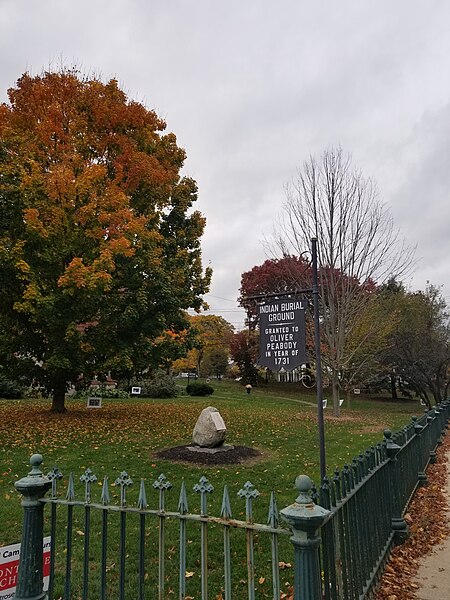Praying Indian is a 17th-century term referring to Native Americans of New England, New York, Ontario, and Quebec who converted to Christianity either voluntarily or involuntarily. Many groups are referred to by the term, but it is more commonly used for tribes that were organized into villages. The villages were known as praying towns and were established by missionaries such as the Puritan leader John Eliot and Jesuit missionaries who established the St. Regis and Kahnawake and the missions among the Huron in western Ontario.
Puritan minister John Eliot leads Natick Indians in Christian prayer, as depicted on the mural of the rotunda on the Massachusetts State House in Boston.
A partial list of names on the Natick monument
A memorial dedicated to Praying Indian veterans of the Revolutionary War
Praying towns were settlements established by English colonial governments in New England from 1646 to 1675 in an effort to convert local Native Americans to Christianity.
Hassanamesit historical marker
Eliot Church and a historic plaque on the site of the First Indian meetinghouse in the praying town of Natick, Massachusetts John Eliot and Daniel Takawambait served as pastors there.
Indian Burial Ground in Natick Praying town






